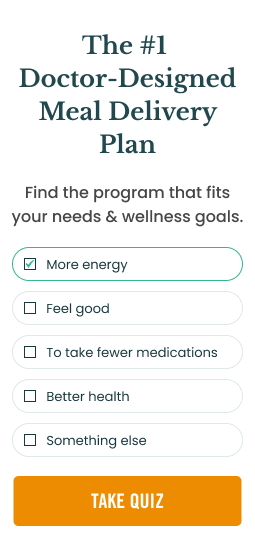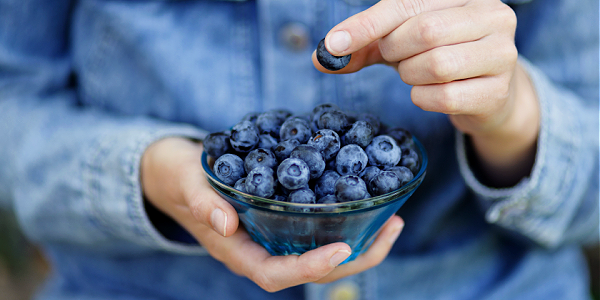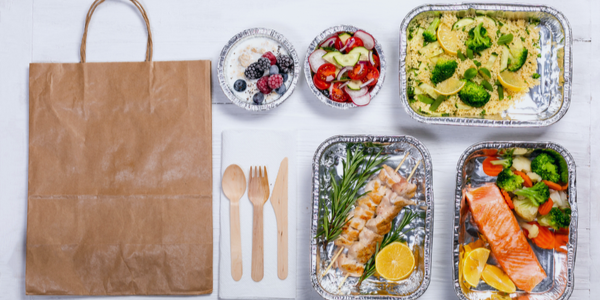
Wondering how to protect yourself from nutrition fraud?
Instead of being duped by flashy features on a package, it’s essential to look a little deeper at the food label. Identifying misleading food labels can help you make healthier choices for yourself and your family.
Keep reading for answers to your most pressing food label questions like, “How are serving sizes determined?” Plus, find misleading food label examples below to spot fraudulent food labels in the future.
What Is Nutrition Fraud?
Nutrition fraud, sometimes called nutrition misinformation, comes in various forms. In general, it describes misleading claims or a distortion of information that causes product misuse.
Such fraud is especially rampant in food, nutrition, and supplement industries and often targets vulnerable populations—such as elderly adults, chronically ill individuals, or people seeking weight loss. In fact, nutrition misinformation is considered a leading form of health fraud and a significant concern for Americans.
While the Food and Drug Administration (FDA) does monitor food labeling, there are limitations as to what it and other government agencies can do to correct fraudulent nutrition practices. That means it’s ultimately up to you as the consumer to assess the accuracy of a label.
In other words, just because something is printed on a label or promoted for a specific purpose does not mean it’s automatically true. What’s not included on a label may also raise eyebrows since other suppliers or manufacturers can omit information consumers may view as unfavorable. Recognizing false advertising and marketing can help you not only to save money, but to safeguard your health. It’s best to beware, but not be fearful, regarding labels.
If you’re interested in learning more about food fraud, the U.S. Department of Agriculture (USDA) has an entire list of nutrition misinformation and fraud resources.
Misleading Food Labels Examples
“Red flags” on labels can be subtle, even for the most practiced label-readers. One simple rule to remember is that if a nutrition claim sounds too good to be true, it usually is. Be wary of food companies claiming their product is a “quick fix” or “cure-all.”
Other language and claims that warrant a closer look include:
•“New formula:” This may be a novel way to get around complaints the company has had in the past. It may also be a new formulation that allows the company to cut corners on quality. In some cases, however, this may signal that the company has actually released a new and improved version of an old product.
•“Compare to ____:” This phrasing may insinuate that one brand is “good” while the other is “bad,” when in reality, they aren’t that different.
•Supported by studies or health professionals: Label claims may only be supported by one study (not a body of evidence) or non-credentialed individuals (such as an influencer or coach rather than a dietitian/RD or doctor/MD).
•Overly-emphasized endorsements or reviews: Some companies put customer review or celebrity endorsements front and center to distract from the fact that their products lack any real substance.
•“X years of experience:” Just because a company has been in business for many years doesn’t necessarily mean they’ve been doing things right that whole time.
Claims About Calories or Fat
•Light or lite: These products may have added sugar to compensate for lower levels of calories or fat.
•No added sugar: A product without traditional refined sugars could have sneaky sugar substitutes, sugar alcohols, or alternative sweeteners that aren’t necessarily health-promoting. Products lacking sugar may be fortified with high levels of fat to create a sense of satiety, and fat accounts for more calories per gram than sugar.
•Zero trans fat: Technically, the product can still contain less than half a gram of trans fat per serving, which can add up if you have more than one portion.
Claims About Ingredients
•“Whole food” or “natural:” Products labeled “natural” can still include added sugars, salts, and fats, meaning it may not necessarily be a food in its most natural form.
•Organic: While USDA Organic foods must meet more stringent organic labeling standards, some companies use “organic” as a synonym for natural. Additionally, there are four distinct types of labeling for organic products, so you’ll want to look closer to see if your product is 100% organic or simply “made with organic ingredients.” It’s also worth noting that sugar and other sweeteners can qualify as organic without adding much nutritional value.
•Genetically Modified Organisms (GMOs) or Genetically Engineered Foods: Although GMOs commonly appear in today’s food supply, there are technically only 11 GMO crops. Some brands that don’t contain even contain one of these GMO crops say “non-GMO” to give their buyers a false sense of security.
•Multigrain: This word simply means the product contains more than one type of grain, not necessarily whole grains.
•Made with real fruit or fruit juice: These products may only contain a very small percentage of real fruit ingredients.
•Sugars: Keep in mind that sugars often lurk under a variety of unassuming names, such as corn syrup, rice syrup, or fruit nectar.
Claims About Nutrient Content
•Processed vs. unprocessed: These terms lack a concise definition and don’t necessarily convey nutritional value.
•“Low,” “Reduced,” “High,” “More,” and “Good” or “Excellent” Source: Surprisingly, these terms have federally defined parameters about the recommended daily levels, but not all companies abide by these guidelines when describing their products.
•Fortified: Vitamins and minerals may have been added back into these products at the end of processing that weren’t naturally present, but in a less bioavailable form (one the body can’t use as effectively).
Claims Regarding Food Preferences, Sensitivities, or Allergies
•Local: As a nuanced term, this package claim could mean the food was grown close to you or close to the factory it was cultivated for. In other words, it’s not highly regulated or specified.
•Gluten-free: This distinction does not automatically make a food “healthy.” Additionally, some foods are certified by a specific agency that monitors ingredients and cross-contamination, while others simply say “gluten-free” but don’t specify testing methods or facility precautions.
•Allergen-friendly: These foods may be free of major allergens but could still contain some ingredients you’re allergic or sensitive to.
•Low-sugar, low-fat, or low-carb: Labels with these words don’t necessarily indicate that the food is healthy. Other less healthy ingredients have been added to compensate for flavor, and these products can still be highly processed.
Don’t Forget About Drinks
Many people think of food products when it comes to label fraud, but beverages can be misleading, too. For example, a bottle or can doesn’t equal one serving.
Don’t let the diet soda labels confuse you, either. These drinks can contain ingredients other than sugar that aren’t necessarily paving the way for wellness.
How Are Serving Sizes Determined?
As if fraudulent nutrition labeling wasn’t confusing enough, assessing serving sizes makes matters even more complicated. Although brands are required by law to base serving sizes on the amount of food people typically consume, serving sizes may not reflect appropriate portion sizes (the amount you should consume or choose to consume). In other words, the serving size may reference amounts customarily consumed instead of a nutritionally appropriate amount.
Companies have some leeway with labeling and aren’t always held to a standard serving size for specific products. This means that what qualifies as a single serving for one brand may differ from another. For example, one cookie may be a single serving for one brand, while three cookies may be a single serving for another company.
When reading a label, start with the serving size. It can be helpful to compare the serving size with the total number of servings per container and the portion size you eat. This comparison can give you clues about the food and help you decide if it fits your health regimen.
You’ll also want to pay attention to serving size changes (which tend to affect items like snack foods, sodas, and ice creams) and packages with dual columns (one that says “per serving” and one that says “per container”).
How to Protect Yourself From Nutrition Fraud
Learning the skill of reading nutrition information and navigating health claims can ultimately help you make healthier decisions.
Get to Know the Nutrition Facts Label
If you aren’t familiar with how a nutrition or supplements label is formatted, it’s never too late to learn! Get acquainted with the basics, such as:
•Serving size and number of servings per package
•Total calories
•The % Daily Value (DV) column
An important aspect of labeling to remember is that the % Daily Value is based on an average diet consisting of 2,000 calories, which may be too high or low for you personally, depending on your age or life stage. To determine what’s right for you individually, you can compare the amounts with the dietary reference intakes (DRIs) listed for your gender and age.
You’ll generally want to choose the option that offers more nutrients per serving (like vitamins, minerals, and fiber) and less cholesterol, sodium, saturated fat, and sugar. You may find that examining other nutrient levels, like the total carbohydrate count or the amount of vitamin C or fiber, is personally meaningful to you.
Periodically, changes are made to the format of the nutrition label, so it’s worth refreshing yourself on the details from time to time. Usually, these changes aim to reflect new scientific findings in nutrition and health and hopefully make it easier for the consumer to choose a healthy food.
Look at Both Sides of the Box
One easy way to identify misleading health claims is to make sure what’s highlighted on the front of the packaged foods is confirmed by the nutrition label and ingredients list on the back. For example, a so-called “healthy choice” or “heart-healthy” food may still contain a surprising amount of sugar.
Beyond tricky terms, it can be helpful to familiarize yourself with front-of-label terms with a specific definition, such as “free-range” or “cage-free.” Understanding egg and meat grading systems can also help you understand the supermarket aisles.
Ask An Expert for Advice
If you’re having trouble understanding label terms on your own, enlist the help of a registered dietitian, the credentialed food and nutrition expert. You can ask for a grocery store tour to help you navigate real-life labeling reading situations. Following along with official associations, like the FDA, can help keep you updated on food safety alerts, public health threats, and news regarding the latest scams.
You can also call the listed “experts” or company personnel on the label. If your questions about ingredients aren’t answered promptly, something suspicious may happen. Remember that celebrity endorsements aren’t a star of approval regarding nutrition.
Mislabeling Food Labels: Final Takeaways
Learning about food labels and protecting yourself from fraudulent claims takes time and effort. However, this endeavor is worth it and can help fortify your health against nutrition misinformation.
If navigating the nuances on your own is overwhelming, don’t hesitate to contact a dietitian or doctor for assistance.






